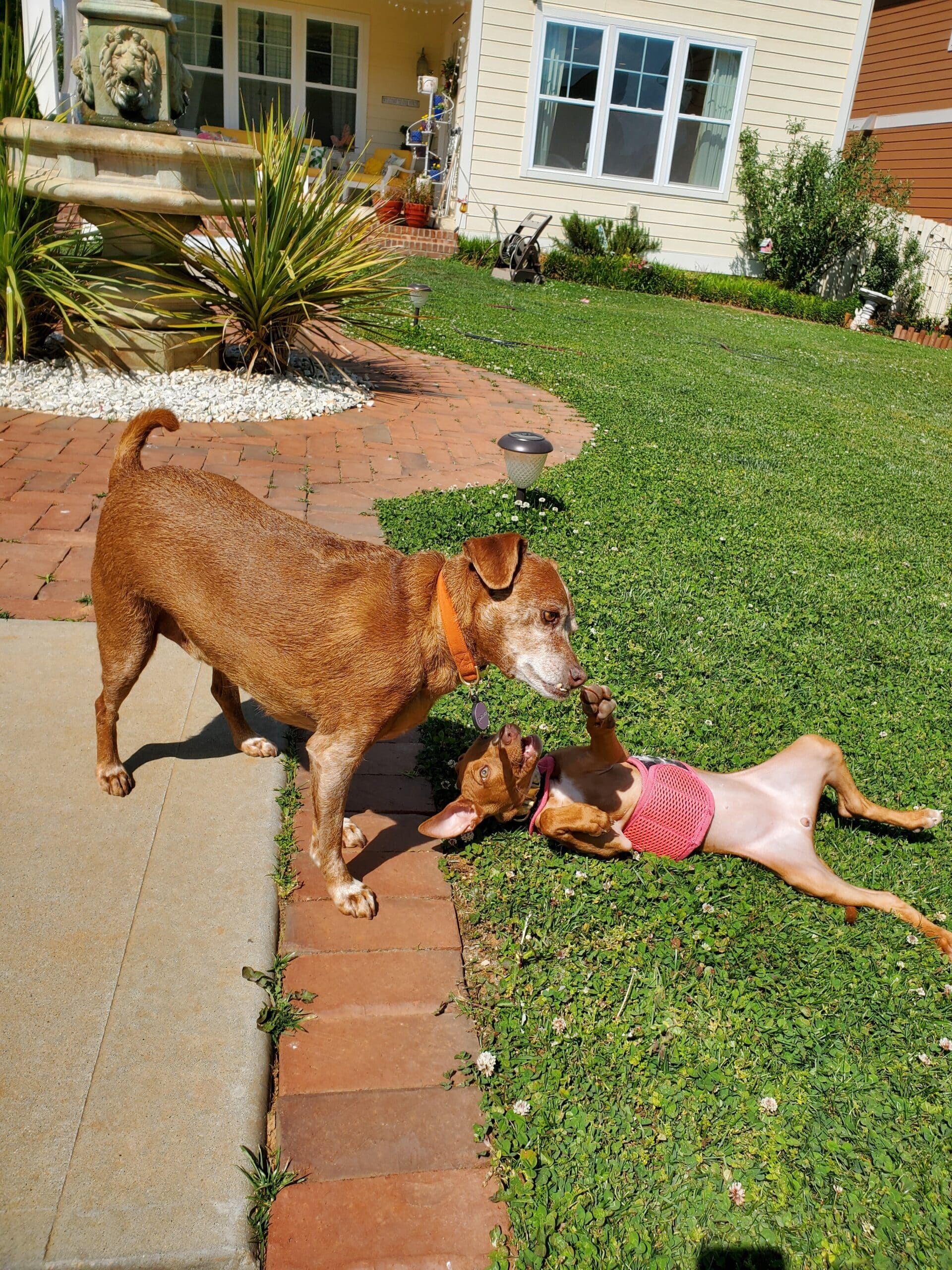Should You Separate Your Puppy and Older Dog?

Bringing a new puppy home is exciting for you, but can be stressful for an older dog. Be thoughtful about your dogs’ interactions. In the past, the general advice was to introduce new puppies to older dogs in the home right away. Now we know that isn’t always the best approach.
How to introduce a puppy to an older dog: Follow these 5 steps
Step 1: Create space
Giving puppies and older dogs their own space before introducing them encourages positive interactions in the future. There’s no reason to rush greetings and interactions between dogs; it’s oftentimes helpful to keep dogs and puppies separated for a few days or even weeks. Using baby gates, closed doors, crates and other dividers in the home creates space and lets them get used to the sound, sight and scent of the other dog without directly having to interact. Then, interactions are more relaxed and stress-free, which fosters better ongoing relationships between them.
Step 2: Introduce neutrally
Depending on your dog’s temperament, the introduction may happen on your puppy’s first day home, or if you have a senior dog or a dog who has other health or behavioral issues you may want to wait days, or even weeks before directly introducing them. The goal is to allow them to have adjusted to the presence of the other dog before they interact. We want those initial introductions to happen in neutral spaces outside your house or yard. This helps reduce the likelihood of stress or conflict. Start by taking your dog and puppy on parallel walks where one person has one dog on a leash and someone else has the other dog on a leash to help everyone get used to being close. Once your dog and puppy have met in a neutral area, and if that meeting went well, start to slowly allow them to spend time together in the house and yard.
Step 3: Watch for signs of stress
Once you’ve introduced your dog and puppy, monitor the interactions. Watch the body language from your dog and puppy closely for any signs of stress or discomfort.
Tips to reduce stress between dogs:
- Before letting dogs interact, remove high value items like food, chews and toys from the area, especially if you know your older dog might have resource guarding tendencies.
- If interactions seem tense, or the dogs become agitated, separate the dogs right away to give them a break.
- Keep your dogs separated for a while to allow them to just acclimate to the scent of the other dog.
Step 4: Manage interactions
If you can’t monitor your puppy and dog while they are together, keep them separated. Even if the interactions are going well, continue to manage their playtime and engagement. Don’t allow your puppy to bother or harass your older dog. This is especially important when your older dog is sleeping and eating. We never want older dogs to be put in a position where they feel like they need to correct or “tell off” the puppy. Intervene on your older dog’s behalf and redirect an overly enthusiastic puppy; teach the puppy appropriate ways to interact.
Step 5: Go slowly
It’s tempting to rush the introduction process or encourage them to spend lots of time together right away, but a better approach is allowing your dog and puppy to learn about each other slowly and intentionally. This will help build trust. Make sure they have their own private spaces to retreat like a crate, bed or a designated area of the house, such as a dog room, that the other dog can’t access. The goal is neutral engagement and that can take time. Long-term management strategies like baby gates create a less-stressful house when interactions are tense.
Puppy and older dog: Tips for success
If your older dog has health conditions, behavioral issues like reactivity, or is a senior with age-related conditions like arthritis, be especially thoughtful about how you introduce your puppy and monitor interactions. You may want to keep your puppy separate most of the time. Consult with a dog trainer who utilizes positive reinforcement methods if you have questions. A dog trainer helps you to manage introductions and creates a training plan for future issues.
